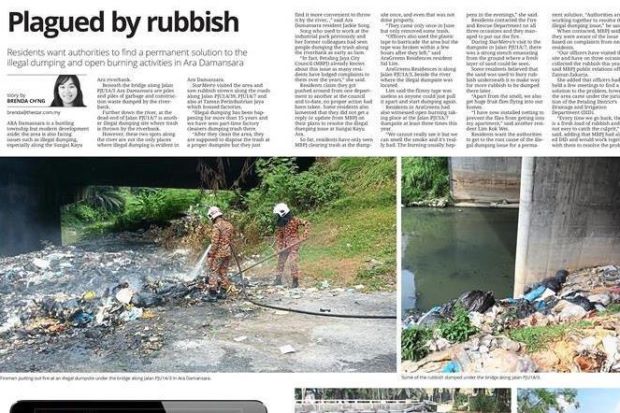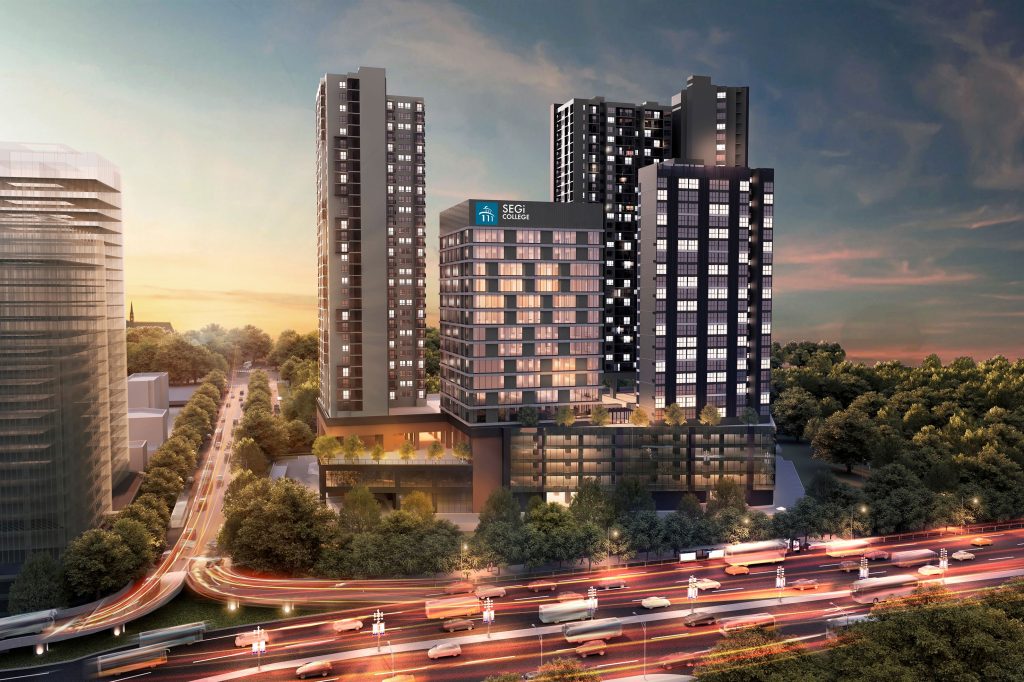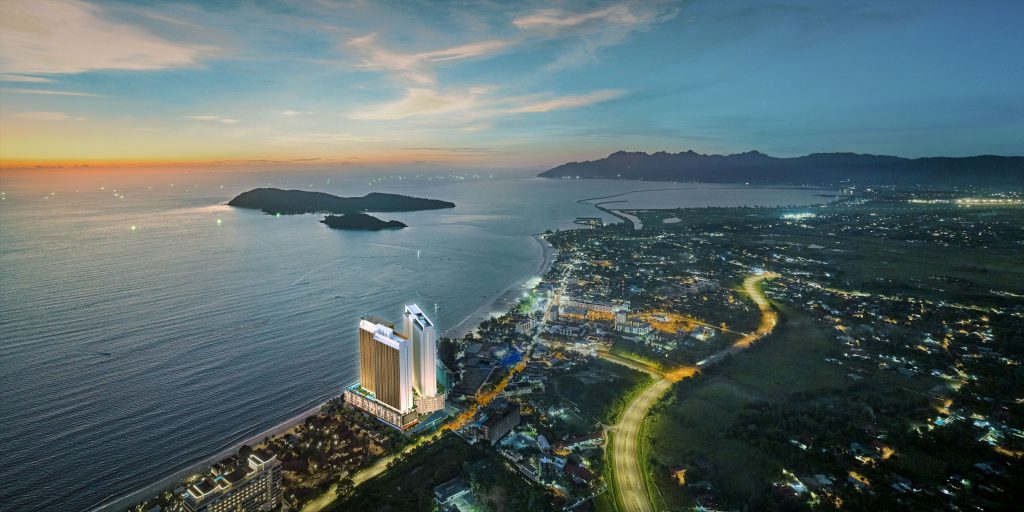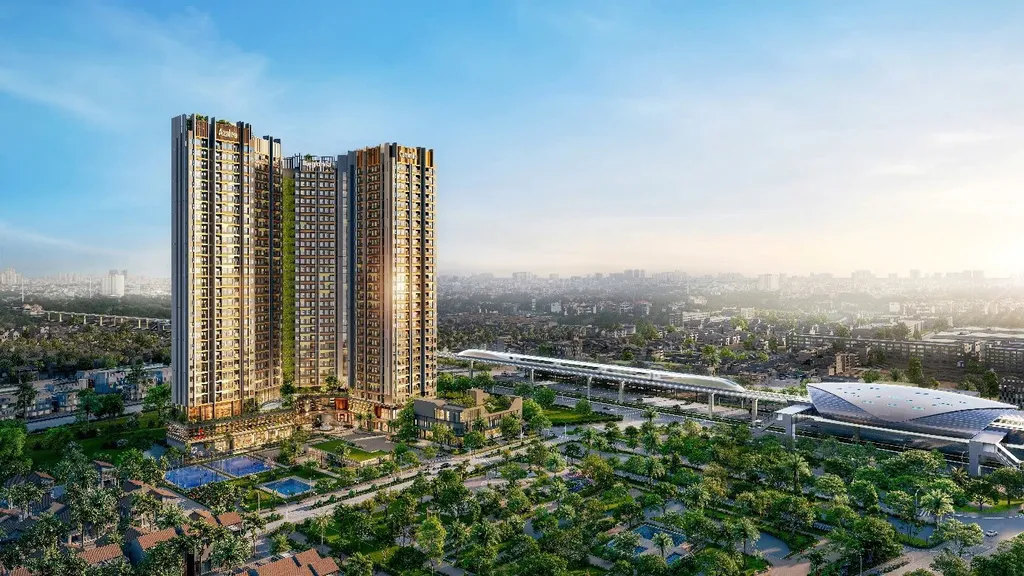BY VINCENT TAN

5 Ngo (left) and Ng Wah Cheng (far right) sharing a light moment as they roll the cut bun dough into shapes, which they will then fill with either meat or bean-paste and steam to completion.
AS far as new villages go, Kampung Cempaka’s history isn’t that long, having been founded in 1969 on what used to be rubber estates and tin mines in the Sungai Way area. Although it is now one of the few main “urban” villages in Petaling Jaya, back then, village resident Ng Wah Cheng, 75, recalls how it used to take about two hours to get to Kuala Lumpur.
Today, it only takes about 20 to 40 minutes depending on the traffic.
“There wasn’t any roads like the Damansara-Puchong Expressway (LDP) and Bandar Utama was still rubber estate land then,” he said.
A single dirt road, Ng added, connected the village and the Old Subang Airport Road, and if you were lucky, you could catch the bus in time to head to town.
The bridge over Sungai Kayu Ara, now a major road connecting the village, the Sunway Commercial Centre and Aman Suria residential properties to the LDP, was a wooden structure in the mid-80s, Ngo Pek Soo recalls.
“The village got its basic amenities of electricity supply and piped water five years after I moved here, “ he recalled.
Before that, villagers would use kerosene lamps for lighting, and jump into Sungai Kayu Ara to bathe.
Both are risky propositions today as the village houses are made of wood and the river is polluted.
Aside from the narrow roads stereotypical of Chinese new villages, the area has a lot of three-storey structures.
Although council and construction laws usually prohibit three storeys for houses, Kampung Cempaka is an exception, although there have been cases in the past where some residents went overboard with renovations, resulting in some ugly stand-offs with the city authority in the past.

One of the two main temples in the village, the Yuen Leong Sing Fatt temple, in Jalan PJU 1/1, shifted over here from Setapak. The temple celebrates four main deities’ birthday and is usually open from 6am to midnight.
The village’s name, translated from Mandarin, means “Thousand Hundred Homes”, and when it started, most of the residents came from Bangsar and Setapak. Colloquially, the place was known as “Big River” (Da Gang), and until the late 2000s, the village roads did not display any signs denoting the road names or numbers, Ngo laughed.
The place boasts of a few historical areas, such as its central temple in Jalan PJU 1/1, sitting alongside the basketball court. The sports facility also doubles as the centre for the community’s social activities, where festivals and gatherings are held under the covered ball court.
Just off the structure, is a tree that older villagers claim was planted by the previous Sultan of Selangor Sultan Salahuddin Abdul Aziz Shah, to mark the village’s founding.
“We’d like to really do up the tree properly and put a commemorative plaque but there is nothing solid in our archives,” said village committee members.
Nevertheless, the tree has stayed on, and even trimming is done sparingly.
Food-wise, residents remember one or two bak kut teh shops, but these have closed down.
Nowadays, one of the village’s better-known food offerings are its handmade Chinese buns (pao), hand-rolled by Ngo himself, at his house in PJU 1/1.

As the largest covered structure in the entire village, the basketball court, also along Jalan PJU 1/1 is the main centre for all community activities, such as the preparations for a Buddhist ceremony over the weekend.
Ngo laments how tastes and people’s capacity for artisan work are slowly changing.
“Although people like to eat, they don’t necessarily want to learn the hard techniques,” said Ngo, recalling how he once tried opening his pao bakery to teach anyone willing to learn, but most couldn’t stomach the amount of work needed.
Elsewhere, the Cempaka market also draws fans for the handmade lai fun noodles, made from rice and/or tapioca flour.

Another typical scene of new villages, even in an urban setting, is that of narrow roads, and almost no more space for road-widening.
However, the market is pretty quiet on Mondays when hawkers such as Ngo, the lai funstall and the nasi lemak seller take the day off.
“These days, people still come to the market, mainly for the chicken, but yes, the number of customers has been dwindling, because of the poor traffic situation and parking,” said village chief Theresa Lim.















































